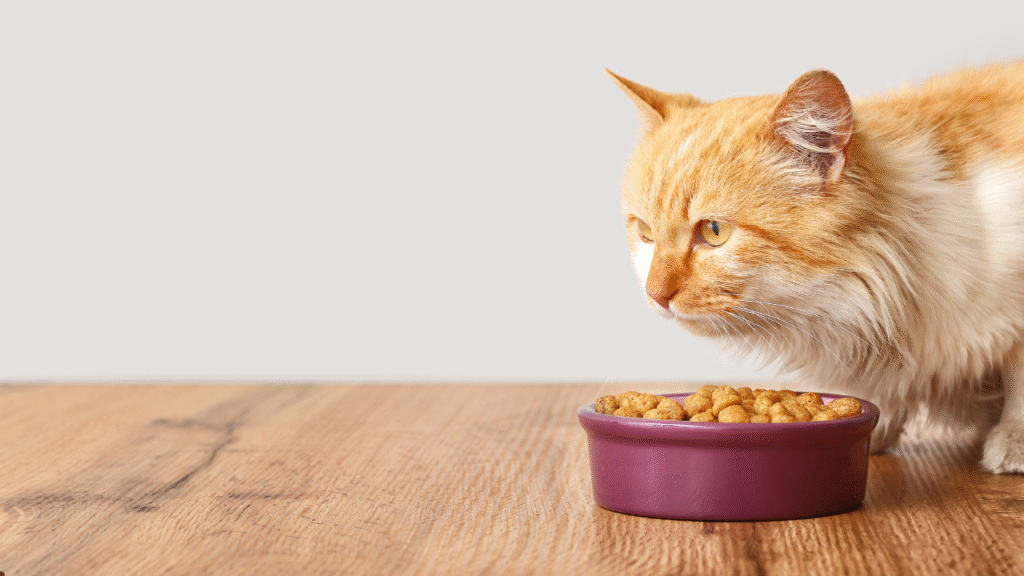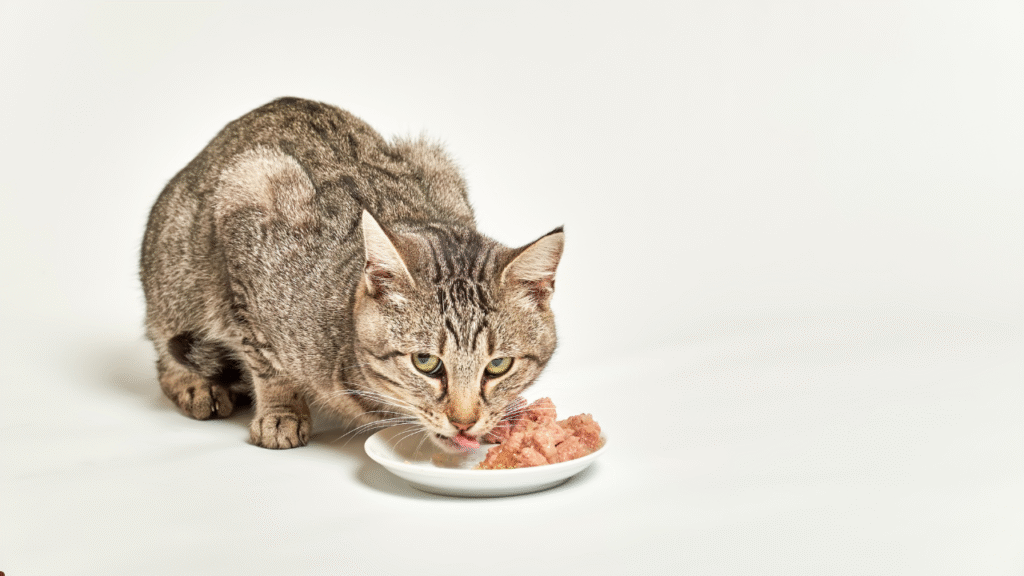As cat lovers, we strive to provide the best for our furry companions. From cozy beds to playful toys, we pamper them with affection. However, one of the most important aspects of caring for our cats is their diet. This is where fresh cat food becomes essential. Pet owners are increasingly switching to fresh cat food for a good reason. It’s healthier, tastier, and often leads to happier and more energetic pets.
In this guide, we’ll explore the world of cat fresh food—what it is, why it matters, and how to transition smoothly. Whether you are new to the concept or looking to improve your cat’s diet, this article will provide all your insights.
What Is Fresh Cat Food?
It refers to meals made with real, whole ingredients—like chicken, turkey, salmon, beef, and vegetables—that are minimally processed and often stored in the refrigerator or freezer. Unlike traditional dry kibble or canned food, cat fresh food is designed to be more nutritious and easier to digest.

Key Characteristics:
- High-quality protein sources
- No artificial preservatives
- Limited ingredients
- Often vet-formulated
Benefits of Fresh Food for Cats
Switching to it comes with a host of benefits. Here are the top reasons why many cat parents are making the move:
1. Improved Digestion
Cats have sensitive stomachs. Fresh ingredients are easier to digest, which means fewer tummy issues and better nutrient absorption.
2. Shinier Coat and Healthier Skin
It is rich in omega-3 and omega-6 fatty acids. These nutrients promote a shiny coat and prevent dry, itchy skin.

3. Increased Energy Levels
With better nutrition, your cat will feel more energetic and playful. Many owners notice a positive change within just a few weeks.
4. Weight Management
Fresh food often contains fewer fillers and more protein, helping cats maintain a healthy weight.
5. Better Hydration
Unlike dry kibble, fit contains natural moisture, helping to keep your cat hydrated—especially important for preventing kidney issues.
6. Fewer Allergies and Sensitivities
Commercial cat foods contain allergens like grains, by-products, and artificial additives. Fresh food helps eliminate those triggers, improving overall well-being.
What Ingredients Should You Look For?
Always check the label when choosing the best fresh food for your pet. Here are the top ingredients to look for:
- Real meat (chicken, turkey, salmon, beef)
- Vegetables like carrots, spinach, and peas
- Healthy fats (e.g., fish oil)
- No artificial colors or preservatives
- Taurine (an essential amino acid for cats)
Avoid:
- Meat by-products
- Fillers like corn and wheat
- Added sugars and salts
- Unidentified “animal meal”

Best Fresh Cat Food Brands
Here are a few popular brands known for their quality and transparency:
- Smalls – Human-grade ingredients delivered fresh to your door.
- JustFoodForCats – Vet-formulated, USDA-certified meats.
- Nom Nom – Made in small batches, rich in nutrients.
- Raised Right Pets – Home-cooked style meals.
Always consult your vet before switching brands or trying new recipes.
How to Transition Your Cat to Fresh Food
Cats can be picky, so switching to a new food takes patience. Here’s a step-by-step approach:
- Start Slow – Mix a small amount of fresh food with their current food.
- Gradually Increase – Over 7-10 days, increase the amount of fresh food.
- Watch for Reactions – Monitor your cat for any changes in behavior or digestion.
- Stick to a Routine – Feed at the same time each day for consistency.
Cost of Feeding Fresh Cat Food
Feeding it can be more expensive than dry kibble, but many pet parents find it’s worth the investment. On average, you can expect to spend:
- Depending on the brand and portion size, $2 to $5 per day,
- Subscription services may offer discounts for bulk purchases.
Is Fresh Cat Food Safe?
Yes—if stored and prepared properly. Always follow storage instructions:
- Keep refrigerated or frozen.
- Use within the recommended timeframe.
- Wash hands and utensils before and after serving.
Many companies adhere to human-grade safety standards, giving you peace of mind.
Homemade vs. Store-Bought Fresh Cat Food
While some pet owners decide to prepare it at home, ensuring it is nutritionally balanced is crucial. Many store-bought options collaborate with veterinarians and pet nutritionists to meet your cat’s dietary needs.
Pros of Store-Bought:
- Convenient
- Vet-formulated
- Guaranteed nutrition
Pros of Homemade:
- Can accommodate specific dietary requirements
- Complete control over ingredients
Fresh Cat Food for Different Life Stages
Kittens:
Growing kittens require more protein, fat, and calcium for development. Choose a fresh food specially formulated for kittens.
Adults:
A balanced diet with consistent levels of protein and fat is important for maintaining weight and energy.
Seniors:
Lower-calorie, joint-supporting recipes. High-protein, easily digestible foods are ideal.

FAQs on Fresh Cat Food
1. What is the healthiest food for cats?
The healthiest food for cats is rich in animal protein, low in carbohydrates, and essential vitamins and minerals. It often meets these criteria.
2. Can cats eat raw food?
Some owners feed their cats raw food, but it must be done carefully to avoid bacteria. Consult your vet before starting a raw diet.
3. Is wet food better than dry food for cats?
Wet food is generally better than dry because of its higher moisture content. It offers even more benefits.
4. How do I store fresh cat food?
Store in the refrigerator for 3-5 days or freeze for a longer shelf life. Always check expiration dates.
5. What are the best high-protein cat foods?
Fresh cat foods like Smalls, Nom Nom, and JustFoodForCats are high in protein and made with real meat.
6. Can kittens eat fresh cat food?
Yes, but ensure it’s formulated for kittens with proper nutrients like DHA and taurine.
7. Is homemade fresh cat food better than store-bought?
It depends. Homemade food gives you full control, but nutritional imbalances are risky without expert guidance.
8. Is fresh cat food good for senior cats?
Senior cats benefit from easily digestible, high-protein fresh foods that support joint health and maintain muscle mass.
9. How often should I feed fresh food to my cat?
Most adult cats do well with two meals a day. Portion sizes depend on your cat’s weight, age, and activity level. Check with your vet for personalized feeding plans.
10. What’s the difference between refrigerated and frozen fresh cat food?
Refrigerated cat food is ready to serve and should be used within a few days, while frozen food can be stored longer and thawed before use. It retains both freshness and nutrients better than shelf-stable options.
By choosing fresh cat food, you provide your feline friend with a diet that promotes their health, happiness, and longevity. This simple change can significantly enhance their overall well-being.
READ MORE ABOUT CATS

1 thought on “Why Fresh Cat Food is Best for Your Pet”